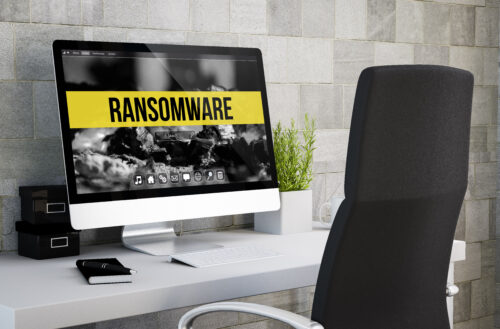
Whether a business or an average person, you can anticipate various threats against your computer systems and servers. These threats can range from viruses that erase entire systems, unauthorized access by hackers who may manipulate files, and the possibility of sensitive information being stolen. Unfortunately, even with the necessary precautions, there is no guarantee that such threats of cyberattacks will not occur. However, one practical measure in mitigating the risks of such occurrences is to enlist the help of a Cyber Security expert from Port Security Services who can help you protect your network from ransomware attacks and other malicious software.
What are ransomware attacks?
Ransomware is malicious software that encrypts a victim’s computer or device data; this prevents the owner from accessing it. The cybercriminals behind this attack then demand a ransom payment within a set amount of time in exchange for restoring access. However, paying the ransom doesn’t guarantee access will be resorted since malware attacks are often deployed by cybercriminals who cannot be trusted, meaning you may never get the description key. You should hire our highly skilled cyber security team, trained to handle ransomware attacks.
When ransomware attacks happen, they gain unlawful access to your device and lock the stored data, making it inaccessible to you. Essentially, this malicious software holds your files hostage. This type of cyberattack can wreak havoc on larger organizations as hackers can gain access to sensitive data, leading to a significant business loss. While cybercriminals may target anyone through ransomware attacks, they often focus on groups they believe can pay larger ransoms.
How can I protect my data?
Firstly, you should always back up your data. This step is crucial as external backing of your files will ensure you still have access to your data if cybercriminals unlawfully hold it hostage. You should also install reliable ransomware protection software. Ransomware attacks will turn essential files into encrypted mumbo-jumbo, leaving you with the only option of paying them to get the information back. Installing ransomware protection software can help prevent those attacks from succeeding. This software is specifically made to help businesses protect all of their data. Without the proper software protection, a business’s data will remain susceptible to potential loss. It’s imperative to note that you must ensure that your operating systems and security software are all kept up-to-date. This will help protect you against malicious malware.
Moreover, it would be best to refrain from clicking on email attachments or links from unknown or suspicious sources. They could have malware embedded in them and lead to a phishing attack. Essentially, you could expose your computer to viruses, worms, trojans, and other forms of malware. When you are navigating the internet, you must be cautious. Websites can be malicious as they may be embedded with malware through pop-ads. Refraining from using public WI-FI to protect yourself from ransomware attacks would be best. Only use a virtual private network (VPN) to safeguard your data.
For more information on ransomware attacks, please don’t hesitate to contact our determined security experts. At Port Security Services, we can help you prevent cyberattacks and safeguard your data from cyber thieves.